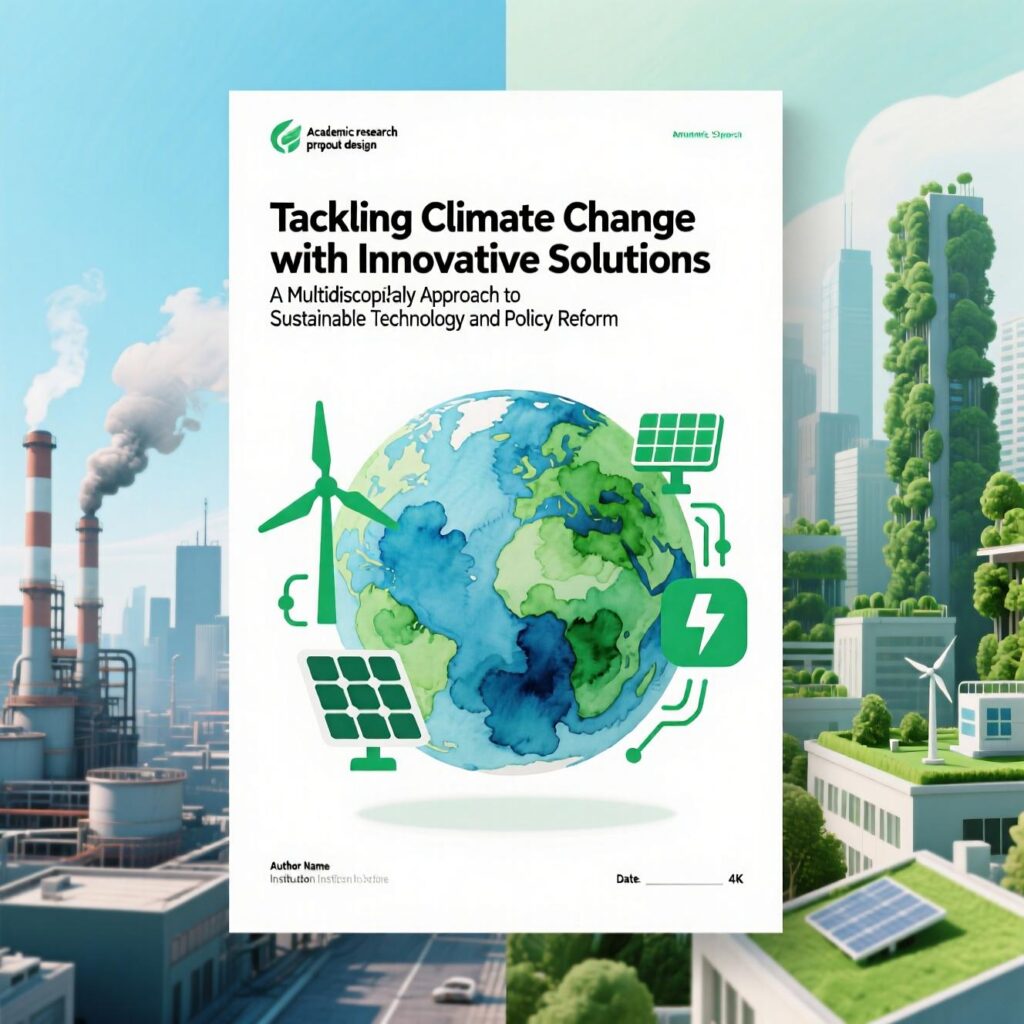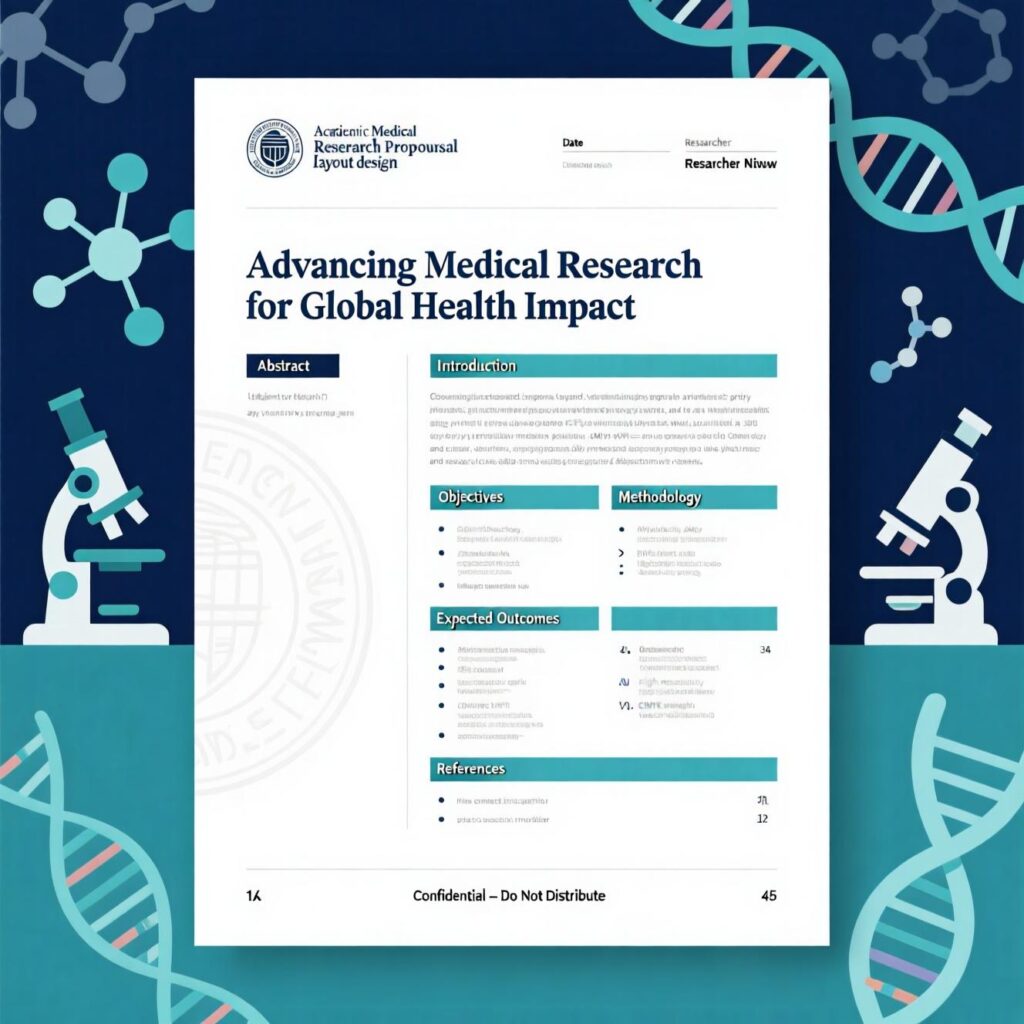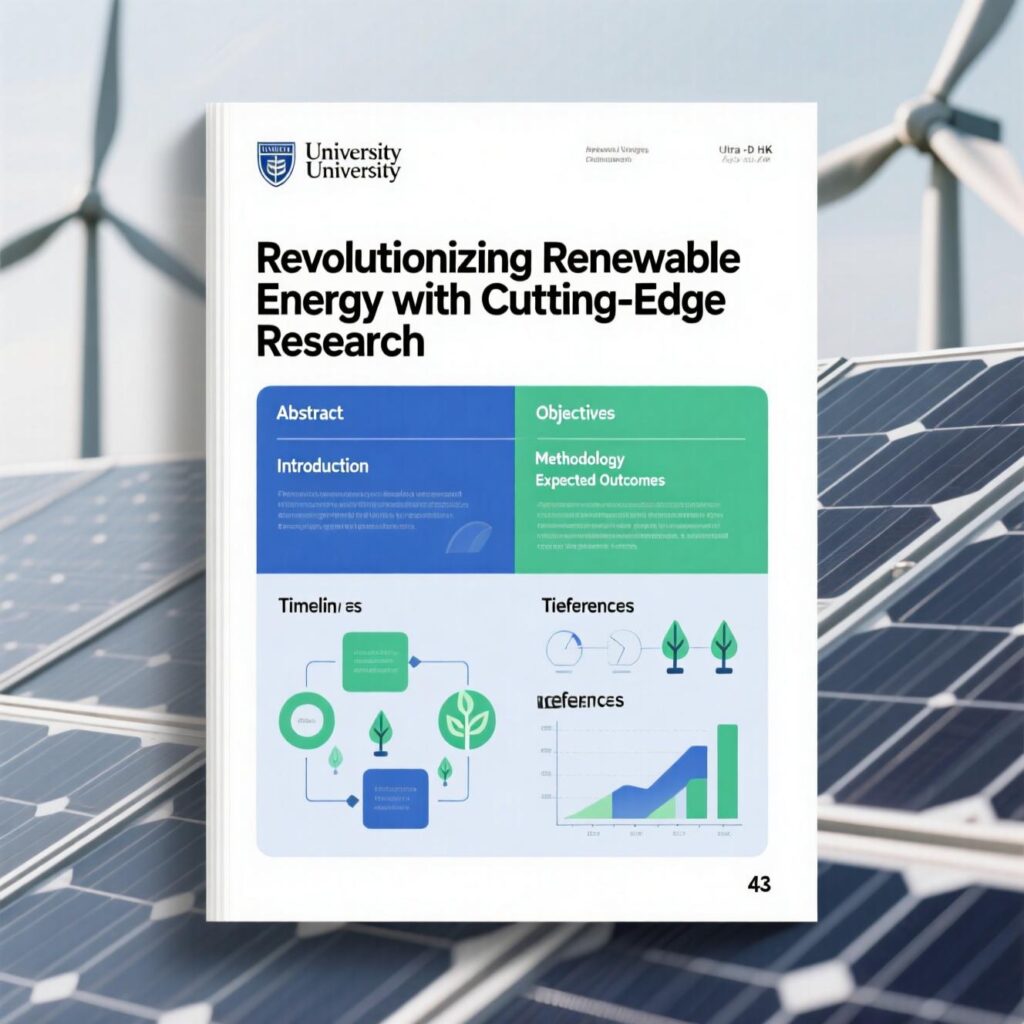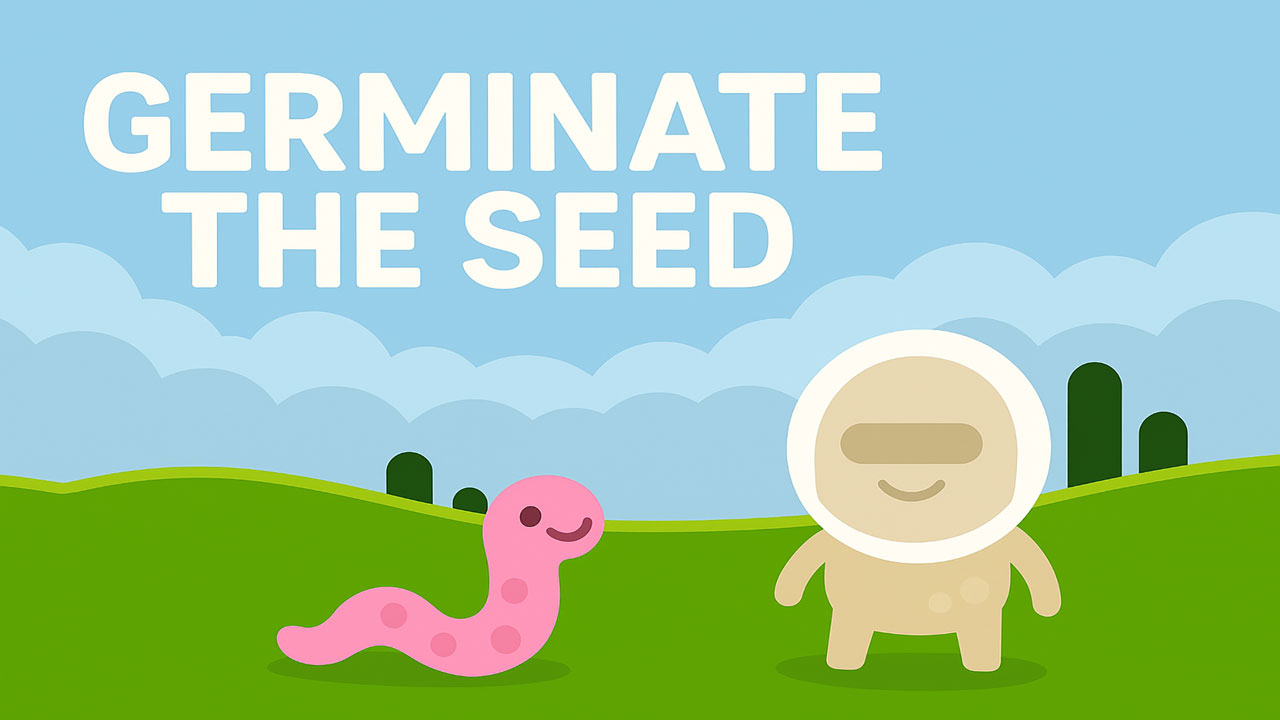Introduction
When it comes to academic achievement, groundbreaking discoveries, or solving global challenges, everything starts with a powerful research proposal. Think of it as the blueprint that transforms a bold idea into a structured plan—one that convinces decision-makers, secures funding, and sets the stage for impactful results. Whether you’re a student, an early-career researcher, or even a seasoned scientist, crafting the right research proposal is your ticket to making a real difference.
In this article, we’ll explore 10 brilliant research proposal examples designed to ignite your creativity and help you visualize what a winning proposal looks like. We’ll dive into topics that range from climate change to artificial intelligence, renewable energy, and global health. Each example is carefully structured to highlight why a well-crafted research proposal matters, what makes it unique, and how it could inspire your next big idea.
By the end, you’ll not only have a clear picture of what a strong research proposal entails but also practical insights into how to create one that is compelling, persuasive, and impactful. Let’s dive in!
Why a Strong Research Proposal Sets the Stage for Breakthrough Discoveries

A research proposal is far more than a formality—it’s the cornerstone of every academic or scientific journey. When done right, it becomes a roadmap that defines your objectives, lays out your methodology, and convinces others that your idea deserves attention and resources. Without a strong research proposal, even the most brilliant concepts can remain hidden or dismissed.
One of the most exciting aspects of a research proposal is that it forces clarity. Researchers often have ideas that are grand, inspiring, and potentially transformative, but without structure, they can easily get lost in the noise. Writing a research proposal means you must answer essential questions: What exactly are you studying? Why does it matter? How will you collect and analyze your data? And perhaps most importantly—what impact will your findings have?
Breakthrough discoveries don’t happen by accident. They happen because someone dared to ask a bold question and framed it within a solid research proposal. For instance, think about the groundbreaking projects in cancer research, space exploration, or renewable energy. None of these started with just a casual idea; they began with carefully drafted research proposals that were reviewed, challenged, and ultimately approved.
Another key reason research proposals matter is credibility. Whether you’re presenting to a university board, applying for a government grant, or pitching to a private foundation, your research proposal demonstrates that you have a clear plan. It shows that you’ve done your homework, understand existing literature, and are ready to contribute something new. This credibility is essential in a competitive environment where hundreds of researchers are vying for the same funding or recognition.
Finally, a strong research proposal inspires confidence—not just in your project but in you as a researcher. When reviewers read your proposal and see your enthusiasm, structured thinking, and innovative vision, they are far more likely to support your journey. That’s why learning from existing research proposal examples is so valuable. They can help you see what works, avoid common mistakes, and push your creativity to new heights.
Research Proposal Example #1: Tackling Climate Change with Innovative Solutions

Few global challenges are as urgent as climate change, and a research proposal in this field has the potential to shape the future of humanity. Imagine drafting a proposal that focuses on reducing carbon emissions in urban areas through advanced green technologies, or exploring how reforestation can be optimized using drone-based planting techniques.
A brilliant research proposal on climate change begins with a strong problem statement. For example: “Current mitigation strategies are not sufficient to meet global climate targets, and new innovative solutions are urgently required.” This immediately establishes the relevance of the research. The proposal can then outline objectives such as testing renewable technologies in urban settings, analyzing the cost-effectiveness of green infrastructure, or developing AI-based models for climate forecasting.
What makes this type of research proposal exciting is its multidisciplinary nature. Climate change is not just an environmental issue; it’s economic, social, political, and technological. A well-structured research proposal might include collaboration between engineers, environmental scientists, policy makers, and economists. This interdisciplinary approach strengthens the proposal because it acknowledges the complexity of the issue.
For instance, one research proposal example could explore how smart grids can integrate renewable energy sources more efficiently. Another could examine how communities can adapt to rising sea levels using innovative urban design. Each of these projects can make reviewers feel the urgency and importance of supporting the research.
Moreover, climate change proposals are highly fundable because governments, NGOs, and private organizations are eager to invest in solutions. Highlighting the potential for real-world impact—such as reducing greenhouse gases by measurable percentages—can make your research proposal stand out.
The beauty of a climate change–focused research proposal is that it doesn’t just live on paper. It has the potential to influence policy, inspire innovation, and most importantly, save lives. By writing a proposal in this area, you’re not only contributing to science but also joining a global mission to secure the planet’s future.
Research Proposal Example #2: Advancing Medical Research for Global Health Impact

If climate change is the most urgent environmental crisis, global health is the most pressing human crisis. A research proposal in medical research has the power to touch millions of lives. Whether it’s developing new vaccines, improving access to healthcare in underserved communities, or advancing treatments for chronic diseases, the stakes couldn’t be higher.
One compelling research proposal example could focus on antibiotic resistance—a growing global threat. The problem statement might read: “Antimicrobial resistance could cause 10 million deaths annually by 2050 if urgent action is not taken.” From there, the proposal can outline objectives such as developing novel antibiotics, exploring alternative therapies like phage therapy, or studying preventive strategies at the community level.
Another impactful medical research proposal could center on improving maternal health in low-income countries. Objectives might include testing mobile health applications to improve prenatal care, analyzing the effectiveness of community health worker programs, or studying new low-cost diagnostic tools. Each of these objectives aligns with real-world needs and demonstrates the transformative potential of the project.
What makes a medical research proposal particularly inspiring is its human-centered approach. Unlike theoretical research, medical proposals often deal directly with quality of life, life expectancy, and human dignity. This emotional resonance can make a proposal especially persuasive to funding bodies.
It’s also important to note that medical research proposals thrive on innovation. For example, imagine a research proposal that combines artificial intelligence with radiology to improve early cancer detection. Or one that leverages wearable technology to monitor chronic conditions in real time. These cutting-edge ideas make the proposal not just scientifically valuable but also futuristic and exciting.
Reviewers are also keen on scalability. A strong medical research proposal should outline how the findings could be applied beyond a single region or population. For example, a study on vaccine distribution logistics in one country could provide insights that benefit global immunization programs.
In short, medical research proposals are brilliant because they connect science with humanity. They show how research can move beyond academic publications to create tangible, life-saving results. If you’re looking for inspiration, this is one of the most rewarding areas to focus your research proposal efforts.
Research Proposal Example #3: Exploring Artificial Intelligence in Education

Artificial Intelligence (AI) is reshaping the way we live, work, and learn. In the field of education, the possibilities are endless—and a research proposal focused on AI can position you at the forefront of a global transformation.
Imagine starting your research proposal with a bold statement like: “AI has the potential to personalize learning for every student, eliminating one-size-fits-all approaches in education.” This immediately sets the stage for an exciting and innovative project.
One research proposal example could investigate AI-powered adaptive learning platforms that adjust lesson difficulty in real time based on student performance. Another might explore how AI can assist teachers by automating administrative tasks, giving them more time to focus on instruction.
AI in education research proposals are compelling because they tackle long-standing challenges. For instance, the achievement gap between students of different socioeconomic backgrounds could be reduced through personalized AI tutoring. Or the shortage of qualified teachers in rural areas could be mitigated through AI-driven virtual classrooms.
A strong research proposal in this field would outline not only the technological aspects but also the ethical considerations. Issues like data privacy, algorithmic bias, and accessibility are critical. Reviewers are far more likely to support a proposal that acknowledges these challenges while presenting creative solutions.
Another exciting angle is lifelong learning. A research proposal could explore how AI supports adult learners seeking to reskill in rapidly changing industries. With the global workforce constantly evolving, this kind of project would have significant social and economic impact.
Finally, what makes AI in education proposals so inspiring is their future-focused nature. They paint a vision of classrooms where learning is dynamic, engaging, and personalized for every student. By submitting a well-crafted research proposal in this domain, you’re not just imagining the future—you’re helping build it.
Research Proposal Example #4: Revolutionizing Renewable Energy with Cutting-Edge Research

The world’s energy systems are undergoing a massive shift, and renewable energy is at the heart of it. A research proposal in this field has the power to change industries, economies, and even geopolitics.
One standout research proposal example might focus on improving the efficiency of solar panels through nanotechnology. Another could explore how offshore wind farms can be optimized for maximum energy production while minimizing environmental impact.
Renewable energy research proposals are especially attractive to funders because they align with both environmental goals and economic interests. Governments, corporations, and investors are eager to support projects that promise sustainable, scalable solutions.
The most exciting research proposals in this area are those that combine innovation with practicality. For example, a project might propose a hybrid energy system that integrates solar, wind, and hydro to provide reliable power to remote communities. Or it could investigate how blockchain technology can be used to manage decentralized energy grids.
An effective renewable energy research proposal would also highlight measurable outcomes. For instance, “This project aims to increase solar cell efficiency by 20% within three years” is a clear, testable objective. Reviewers love proposals that set ambitious yet achievable goals.
Another dimension is social impact. A proposal that examines how renewable energy can provide affordable electricity to low-income regions adds a powerful human element. This not only strengthens the scientific case but also appeals to policymakers and NGOs focused on equity.
Ultimately, renewable energy research proposals are thrilling because they are about shaping the future of civilization. They’re not just technical documents—they’re visions of a cleaner, fairer, and more sustainable world. Crafting a research proposal in this field means you’re part of the movement driving one of the greatest transformations in human history.
Conclusion
A strong research proposal is not just an academic exercise—it’s the launchpad for ideas that can transform our world. From tackling climate change to advancing medical research, from bringing AI into classrooms to revolutionizing renewable energy, these proposals demonstrate how powerful structured ideas can be.
The 10 brilliant research proposal examples we’ve explored show that inspiration comes from tackling real-world challenges with creativity, precision, and vision. Each proposal begins with a simple idea, but through careful planning and persuasive writing, it becomes something capable of shaping the future.
If you’re preparing your own research proposal, let these examples guide you. Embrace bold ideas, ground them in solid methodology, and communicate your passion. Your research proposal might just be the next one that inspires, secures funding, and drives breakthrough discoveries.










